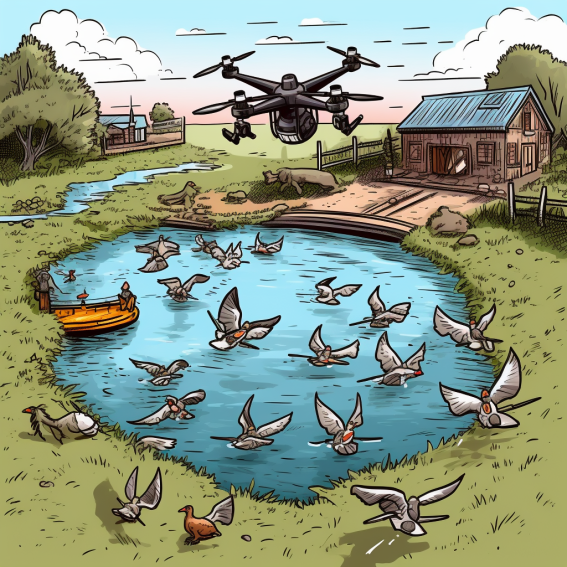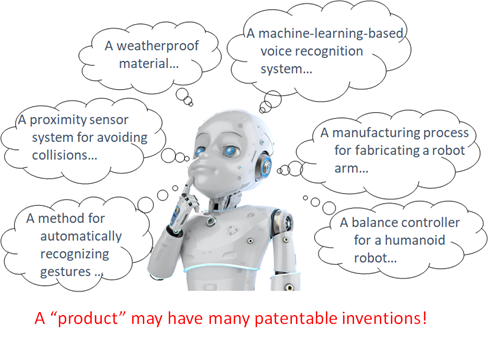April 12, 2024
May 18, 2023
Autonomous vehicles and robotics represent one of the fastest growing technology areas in terms of new patent grants. As the technology for autonomous vehicles and robotics continues to advance, it is becoming increasingly important for companies in these industries to protect their intellectual property through strategic patents. Patents can offer crucial protection to companies, as they grant exclusive rights to use and commercialize a particular invention or technology for a certain period of time. With the growing importance of autonomous vehicle and robotics technology, some experts have suggested that an autonomous vehicle patent war may be brewing. In this high stakes environment, those that fail to adequately develop and pursue a patent strategy will be at a significant competitive disadvantage.
In such an ultra-competitive landscape, how can autonomous vehicle and robotics companies ensure they are effectively executing a patent strategy to protect their company’s interests? This article presents some key steps:

To maintain international patent rights, a patent application must be filed in at least one country prior to the first public disclosure of the technology. For U.S. patent rights only, a patent application may be filed within a one year grace period of the first publication, commercial use, or offer for sale of the technology. Failing to stay ahead of the bar dates can cause permanent loss of patent rights that cannot be later recovered.
Autonomous vehicles and robotics tend to be fast moving fields where technologies are rapidly being developed and deployed. Moreover, the technology potentially has far reaching markets in which strong international patent protection may be critical. Therefore, careful attention to statutory deadlines is critical to maintaining valuable patent rights.
Robotics and autonomous vehicle companies may develop technology covering a wide range of technical areas including electronics, mechanical systems, and software. The most valuable patents will focus on the core areas of innovation that give your company a competitive edge.
A common mistake in this regard is to focus patent strategy only at the product level. Often, this approach results in claims that are too abstract to be patentable. As a result of attempting to cover too much, the company may be left protecting nothing at all.
For example, a patent claiming “a drone to autonomously feed ducks in a duck pond” may describe a novel product, but by itself may be insufficient to state any technical innovation likely to meet patentability criteria.

A better approach is to identify a set of core innovations that each focus on a specific technical solution to a relevant technical problem. This approach may require examining innovations in a wide range of technical areas relevant to autonomous vehicle and robotics companies, such as materials, sensor systems, manufacturing processes, control systems, mechanical systems, artificial intelligence, video/imaging processing, user interfaces, and various software algorithms.
A good question to ask is:
Answering this question leads directly to a patent strategy focused on protecting the core building blocks necessary to develop a competing product. In the autonomous vehicle and robotics space, it is common for a patent portfolio associated with a single product to cover a wide range of technical innovations.

Once the key areas of innovation are identified, it is important rank and prioritize patent filings to maximize value. Patents should supplement, but not replace, product development and it is critical to develop a holistic strategy consistent with the company’s goals and budget.
Considerations in evaluating solutions for patenting may include:
a) Value to the Company: Is the solution a “core” feature that is expected to provide a significant competitive advantage, or is it merely a “nice to have” add-on that provides only a marginal benefit? Is there high degree of certainty that the company will incorporate the solution into its product, or is only speculative whether the solution will ever be commercialized? Does the solution present an opportunity to balance out a weaker technical sector of the company’s overall patent portfolio, or does it fall within an area that already has strong protection?
b) Likelihood of Patentability/Readiness: How likely is the solution to meet the base criteria of novelty and non-obvious? How likely is the solution to be found patent-eligible under software patent eligibility standards? Is the solution at very early stages of development that we can describe only at a broad level, or is it sufficiently developed such that we can describe implementation at various levels of detail?

c) Likelihood of Infringement: How likely is it that a current or future competitor will want to adopt our solution? Is our solution an arbitrary one, selected from dozens of possible solutions, or is there only one or a few reasonably feasible solutions that do not sacrifice performance?
d) Longevity: Is the solution a short-term stopgap that will become obsolete within a few years, or is it core to multiple future generations of the product spanning the next 5-20 years?
e) Detectability: If a competitor were to employ our solution, would we be able to detect it or reasonably infer they are taking at least a similar approach?
In areas of rapid innovation, such as robotics and autonomous vehicles, patent strategy should be an ongoing process that becomes ingrained in the company’s procedures. Patent portfolio status and patent strategy should be reviewed on a periodic basis (e.g., quarterly or monthly depending on the size of the portfolio). A well planned approach and periodic strategic review ensures the company does not miss opportunities to bar dates, ensures the company maintains a balanced patent portfolio, and maximizes value of patents being pursued.

Patent strategy, patent drafting, and patent prosecution is a complex and challenging process, and it is important to work with attorneys having relevant industry and technical expertise in autonomous vehicles, robotics, and the underlying technical fields. A qualified attorney with expertise in can help you develop an effective strategy and plan, navigate the patenting process, and ensure your patent portfolio is aligned with your business goals.
Amsel IP Law has extensive experience working with robotics and autonomous vehicle companies, ranging from early startups to large public companies. The firm can work with you to develop a customized patent strategy that meets your company’s unique needs. Contact Amsel IP Law to learn more about our services and how we can help your company succeed in this exciting and rapidly-evolving field.
Amsel IP Law would like to send you occasional news and updates. Click ‘Sign up’ below to join the firm’s mailing list. You can unsubscribe at any time.